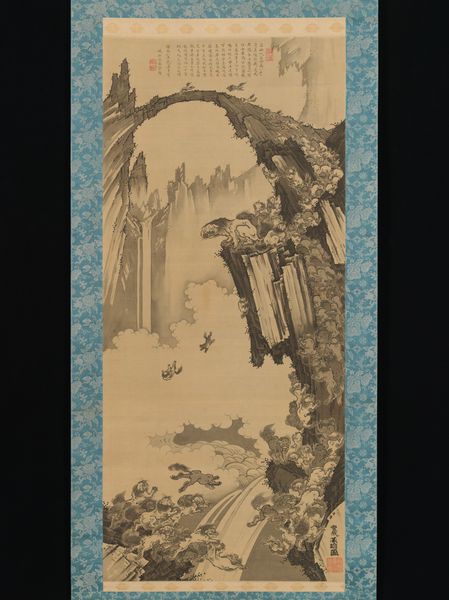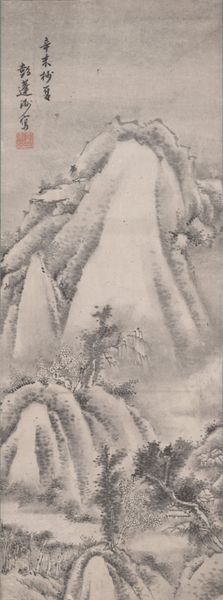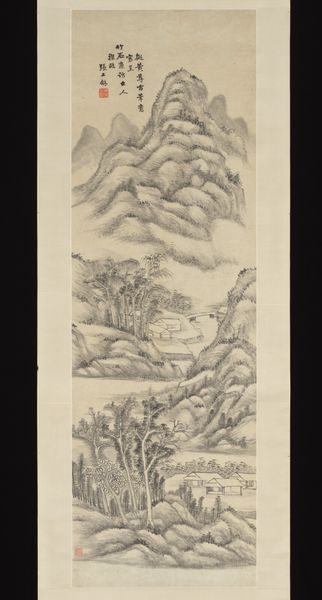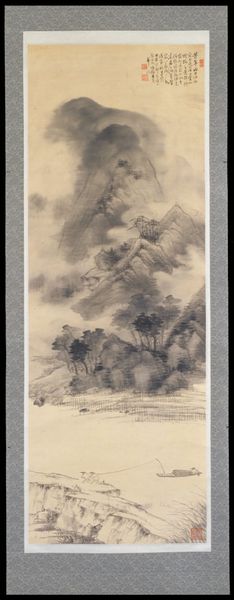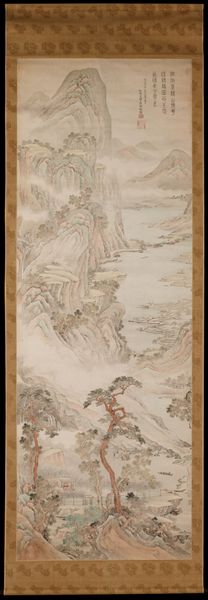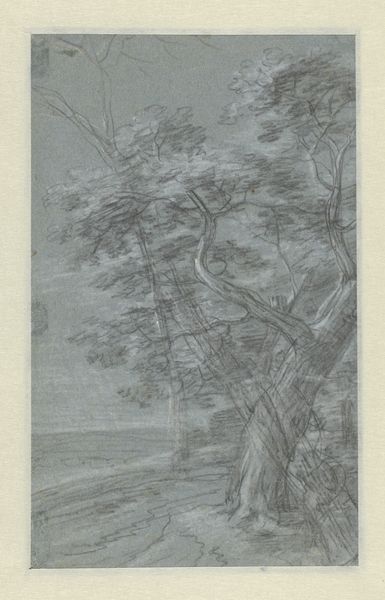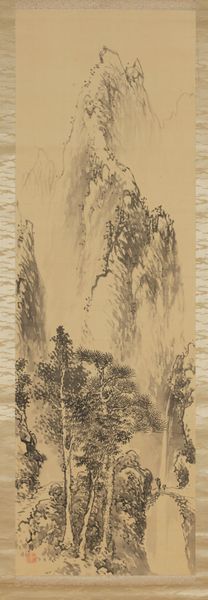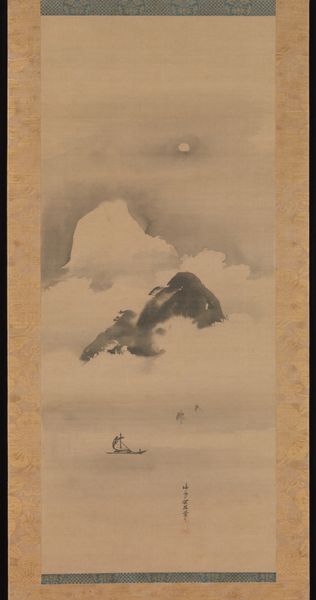![Chinese-style Landscape with Man Fishing from a Boat by Moonlight [right of a triptych] by Kawanabe Kyōsai 河鍋暁斎](/_next/image?url=https%3A%2F%2Fd2w8kbdekdi1gv.cloudfront.net%2FeyJidWNrZXQiOiAiYXJ0ZXJhLWltYWdlcy1idWNrZXQiLCAia2V5IjogImFydHdvcmtzLzc0YTdjNjJhLTIyZTUtNDBmMC04OTBiLTk5ZmFlZDE3M2FiMi83NGE3YzYyYS0yMmU1LTQwZjAtODkwYi05OWZhZWQxNzNhYjJfZnVsbC5qcGciLCAiZWRpdHMiOiB7InJlc2l6ZSI6IHsid2lkdGgiOiAxOTIwLCAiaGVpZ2h0IjogMTkyMCwgImZpdCI6ICJpbnNpZGUifX19&w=3840&q=75)
Chinese-style Landscape with Man Fishing from a Boat by Moonlight [right of a triptych] 1884
0:00
0:00
Dimensions: 48 1/2 x 22 5/8 in. (123.19 x 57.47 cm) (painting, approx.)
Copyright: Public Domain
Kawanabe Kyōsai created this ink-on-paper landscape in the late 19th century. It is part of a triptych, and was likely made for display in a domestic setting, perhaps a tea room. Look closely and you’ll notice the artist's use of varied brushstrokes. Kyōsai skillfully manipulates the ink's consistency, using it to create a sense of depth, light, and atmosphere. The monochromatic palette, combined with the absorbent qualities of the paper, results in a soft, ethereal image. This speaks to the artist’s mastery of traditional techniques. Consider, too, the amount of labor involved in producing this image. Kyōsai, who came from a samurai background, made his living as an artist at a time of rapid industrialization. In this context, his embrace of traditional materials and techniques can be seen as a way of preserving cultural values, a humanistic riposte to industrial efficiency. Ultimately, understanding the material and cultural context of this artwork allows us to appreciate its full significance, beyond its aesthetic appeal.
Comments
No comments
Be the first to comment and join the conversation on the ultimate creative platform.

